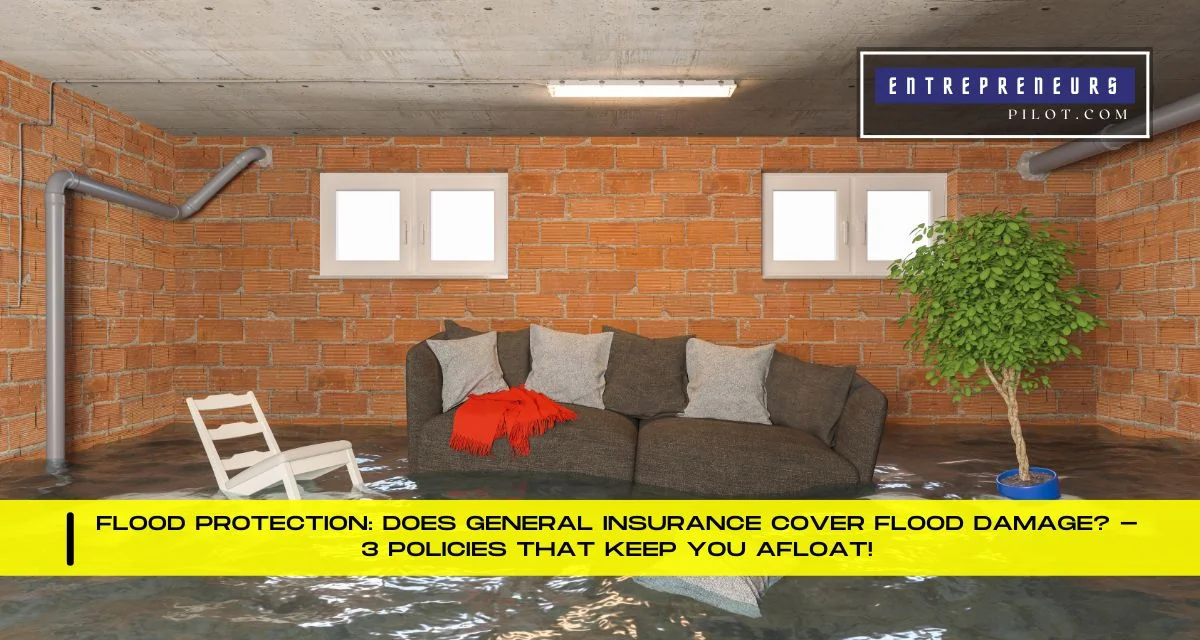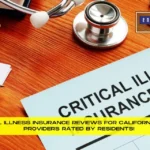Introduction
When the skies darken and the waters rise, the question on many homeowners’ minds is, Does General Insurance Cover Flood Damage? It’s a pivotal concern, given the devastating impact floods can have on homes and lives. Understanding your insurance coverage is like having a life jacket during a storm—it offers peace of mind and keeps you afloat financially. In this blog, we’ll dive deep into the world of flood protection, debunking myths and revealing three key policies that offer a lifeline in the deluge.
Whether you’re nestled in a flood-prone area or just want to be prepared for any eventuality, this guide will navigate you through the murky waters of flood insurance, ensuring you’re well-equipped to stay dry and secure.
Table of Contents
The Reality of Flood Damage and Insurance
Floods don’t discriminate. They can affect anyone, anywhere, turning lives upside down in the blink of an eye. Yet, many are under the impression that their general insurance policy automatically covers flood damage. This misconception could lead to a rude awakening when disaster strikes. The truth is, most standard insurance policies explicitly exclude flood damage, leaving homeowners vulnerable. Recognizing this gap is the first step toward securing your property and financial future.
1. National Flood Insurance Program (NFIP)
The National Flood Insurance Program (NFIP) is the cornerstone of flood protection in the United States. Administered by FEMA, the NFIP offers flood insurance to homeowners, renters, and businesses in participating communities. It’s designed to provide an insurance alternative to disaster assistance to meet the escalating costs of repairing damage to buildings and their contents caused by floods. If you’re in an NFIP-participating community, securing a policy through this program is your first line of defense against flood damages. It’s important to note, however, that there’s typically a 30-day waiting period from date of purchase until the policy goes into effect, so proactive measures are crucial.
- For Expert Financial Insights And Guidance, You Can Visit Our Sister Site – ArabsGeek.com Now!
- Curiosity Piqued? Dive Into the Most Captivating Financial Content by Visiting Our Homepage!
- Unlock Exclusive Business Opportunities! 🚀 Connect with Us Now at our Email: [email protected]!
2. Private Flood Insurance
As the demand for more comprehensive coverage grows, the private flood insurance market is expanding. These policies can supplement NFIP coverage or serve as a standalone option for those seeking higher limits or broader coverage features that the NFIP does not offer. Private insurers often provide more flexible policies, including coverage for additional living expenses if your home is uninhabitable due to flooding. For homeowners looking for tailored coverage that goes beyond the basics, exploring private flood insurance options could be a game-changer.
3. Rider or Endorsement to Homeowners Policy
Some insurance companies offer the option to add a flood damage rider or endorsement to your existing homeowners policy. This can be a convenient and cost-effective way to bridge the gap in coverage without having to manage a separate flood insurance policy. However, it’s essential to understand the specifics of what these riders cover, as they may have limitations compared to standalone flood insurance policies. Always read the fine print and consult with your insurance provider to ensure you’re adequately protected.
Choosing the Right Flood Insurance Policy
Navigating the flood insurance landscape can be overwhelming, but it’s a critical step in protecting your property and peace of mind. Consider the following factors when choosing your flood insurance policy:
- Risk Level: Assess the flood risk in your area to determine the extent of coverage you need.
- Coverage Limits: Ensure the policy limits reflect the value of your property and possessions.
- Waiting Periods: Be aware of any waiting periods before coverage takes effect, especially if you live in a high-risk area.
- Cost vs. Coverage: Weigh the cost of the policy against the coverage provided. Cheaper isn’t always better if it leaves you underinsured.
Conclusion | Does General Insurance Cover Flood Damage
In the quest to keep your home and possessions safe from flood damage, understanding your insurance options is akin to building a dam to protect against the floodwaters. While general insurance policies typically do not cover flood damage, the NFIP, private flood insurance, and specific riders or endorsements to homeowners policies can provide the necessary coverage to keep you afloat. Taking action before disaster strikes is key—don’t wait until the storm clouds gather to secure your lifeline. With the right preparation and protection, you can weather any storm, confident that your most valuable assets are safeguarded against the unpredictable forces of nature.
Frequently Asked Questions
Does General Insurance Cover Flood Damage?
General homeowners insurance policies usually do not cover flood damage. Specialized flood insurance through the NFIP or private insurers is necessary for comprehensive protection.
How Can I Determine My Flood Risk?
You can determine your flood risk by consulting FEMA’s Flood Map Service Center, which provides detailed information about flood zones in your area.
Is Flood Insurance Required?
If you live in a high-risk flood area and have a mortgage from a federally regulated or insured lender, you are required to have flood insurance. Even if it’s not required, it’s often a wise investment.
How Much Does Flood Insurance Cost?
The cost of flood insurance varies based on several factors, including your property’s location, flood risk, and the coverage limits you choose. Policies through the NFIP have set rates, while private insurance costs can vary.
Can I Purchase Flood Insurance at Any Time?
Yes, but remember that there’s typically a 30-day waiting period for NFIP policies to take effect. Private insurers’ waiting periods may vary, so it’s best to secure coverage well before flood season.











